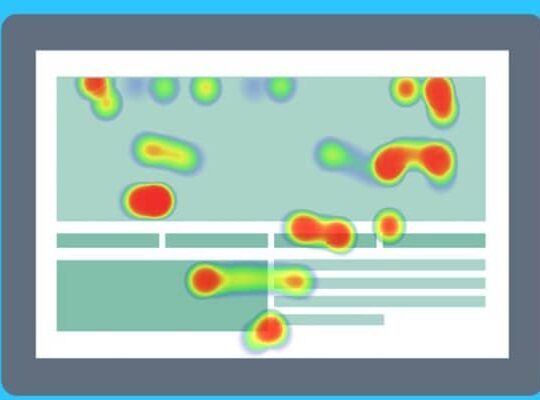An astonishing 80% of workers admit to time theft, making efficient time tracking crucial for businesses. However, complexity in time clock software often leads to inefficiencies and inaccuracies. Simplifying these systems isn’t just about easy-to-use interfaces, it’s about delivering accurate, reliable data that companies can base their decisions on. So, how can businesses find simple, yet powerful time clock software that truly delivers? It’s a fascinating question, and the answer might surprise you. Join the discussion to find out more about simple time clock software.
Key Takeaways
- Simplifying time tracking with user-friendly software enhances productivity and accuracy.
- TSheets, Time Doctor, Clockify, and Hubstaff offer simple and efficient time clock solutions.
- Evaluating software performance and capabilities ensures choosing a reliable and speedy system.
- Transitioning to simpler solutions requires identifying needs, minimal training, and responsive support.
Understanding Time Clock Software
Often, businesses struggle to accurately track employee hours, but with time clock software, this task becomes significantly easier and more precise. This kind of software isn’t just a digital version of the old punch clock. It’s a comprehensive system that records when employees start and finish their shifts, breaks, and lunch hours. It’s designed to streamline the process of tracking work hours, reducing the potential for errors and simplifying payroll calculations.
The software generally includes features like automatic calculations of total work hours, adjustments for breaks and overtime, and integration with payroll systems. Some even offer mobile access, allowing employees to clock in and out remotely. This can be particularly useful for businesses with remote workers or multiple locations.
In today’s fast-paced business world, companies can’t afford to waste time on inefficient systems. That’s why it’s important they understand how time clock software works and the advantages it offers. With this understanding, they’re more likely to make an informed decision when choosing a time tracking solution. Remember, it’s not just about finding a tool that works – it’s about finding a tool that works for them.
Importance of Simplicity in Time Tracking
While tracking work hours is crucial for any business, it’s the simplicity in time tracking that often makes the biggest difference in efficiency and accuracy. The importance of simplicity in time tracking cannot be overstated. It streamlines processes, reduces errors, and promotes productivity.
Complex systems, with their myriad of features and functionalities, can create unnecessary hurdles. Employees may struggle to navigate these systems, leading to inaccuracies and wasted time. Furthermore, complicated time tracking software can make it difficult for managers to gain a clear overview of employee hours, hindering effective management and decision-making.
Simplicity, on the other hand, benefits everyone. For employees, a simple system means less time spent on administrative tasks and more time focusing on their work. For managers, it means easy access to accurate data that can inform staffing decisions, overtime calculations, and budget planning. Moreover, a simple system is more likely to be used consistently, ensuring accurate time tracking across the board.
Ultimately, simplicity in time tracking is about more than just ease of use. It’s about creating an effective, efficient system that benefits employees and businesses alike. It’s about cutting through the complexity to deliver reliable, accurate data. It’s an essential component of any successful time tracking strategy.
Top User-Friendly Time Clock Software
Let’s dive into some of the top user-friendly time clock software that make time tracking a breeze for both employees and managers.
Firstly, there’s TSheets, a mobile and web-based application known for its simple interface. It’s ideal for businesses of all sizes, offering features like GPS tracking, customizable alerts, and detailed reports. It streamlines time tracking, making it hassle-free for everyone involved.
Secondly, Time Doctor stands out. It’s an all-encompassing tool that not only tracks time but also monitors productivity. Its intuitive design makes it easy to use, and its robust features like screen captures and website tracking give managers a comprehensive view of how time is spent.
Another contender is Clockify, a free time clock software with an easy-to-navigate platform. It provides a simple solution for tracking work hours, breaks, and overtime. It’s perfect for freelancers and small businesses looking to keep time tracking uncomplicated.
Lastly, there’s Hubstaff, a software that combines time tracking with project management. It’s user-friendly, offering detailed time tracking, activity levels, and payroll features. It’s a favorite among remote teams for its flexibility and ease of use.
These software options cut through the complexity, making time tracking a simple task rather than a daunting chore.
Evaluating Software Performance
After exploring the top user-friendly time clock software, it’s equally important to understand how to evaluate their performance effectively. Researching online reviews and testimonials from current or past users provides a snapshot of the software’s reliability, speed, and overall performance. However, these reviews should be just one factor in the decision-making process.
The next step is to test the software. Most companies offer trial versions of their products. This trial period allows users to experience first-hand the software’s capabilities, ease of use, and performance under various scenarios. It’s a critical step in the evaluation process.
In addition, the software’s capacity to handle data traffic without lagging or crashing is crucial. A software that stalls when multiple users are logged in simultaneously isn’t efficient and can lead to productivity losses.
Lastly, the software’s ability to integrate seamlessly with other systems used in the company is imperative. It’s not just about the software’s standalone performance, but how well it plays with others. A software that causes conflicts with other systems can create more problems than it solves. Ensuring these factors are covered when evaluating a time clock software’s performance can significantly aid in choosing the right one.
Also read: Software Development Outsourcing: Balancing Quality and Cost
Transitioning to Simpler Time Clock Solutions
Often, businesses find that transitioning to simpler time clock solutions not only streamlines their processes but also boosts employee productivity. The change allows workers to concentrate on their tasks instead of battling with complicated systems. The transition can be smooth and swift if they’re ready to embrace the change.
Primarily, businesses should identify their needs and choose a solution that fits. They shouldn’t opt for a system loaded with unnecessary features they’ll never use. It’s not about having the most advanced solution; it’s about having the most efficient one.
Secondly, businesses need to ensure that the solution is user-friendly. Employees will adapt quicker to a system that’s easy to navigate. Training should be minimal, and the software should be intuitive enough to require little assistance.
Lastly, businesses mustn’t ignore the importance of support during and after the transition. A responsive support team can troubleshoot any issues quickly, minimizing downtime.
Transitioning to simpler time clock solutions doesn’t mean compromising on efficiency or productivity. In fact, it’s quite the opposite. With less time spent on unnecessary complexities, businesses can focus more on their core operations, leading to improved overall performance.
Conclusion
In conclusion, simple time clock software cuts through complexity, delivering effective time tracking solutions. Its simplicity is its strength, making it indispensable in today’s fast-paced work environments. Top user-friendly software options are available to meet unique business needs. Evaluation of software performance is key to choosing the right fit. Transitioning to simpler time clock solutions not only streamlines operations, but also paves the way for increased productivity and efficiency.








